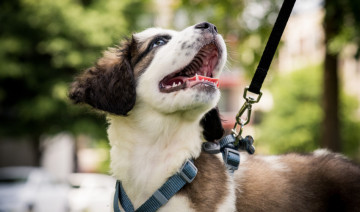
How to Train Your Dog for Leash Walking in Time for Warmer Weather
As the weather warms up, it’s the perfect time to enjoy long walks with your furry friend. But if your dog pulls, zigzags, or gets overly excited on the leash, those strolls can quickly become stressful. Whether you’re training a puppy or helping an older dog improve their leash manners, now is the perfect time to start! Here’s how to teach your dog to walk politely on a leash before spring adventures begin.
1. Choose the Right Gear
Before training begins, make sure you have the right equipment:
- A Well-Fitted Harness or Collar – A front-clip harness is great for dogs who pull, while a standard collar works well for calmer dogs.
- A Standard Leash (4-6 feet) – Avoid retractable leashes, as they encourage pulling and reduce control.
- Tasty Treats – Use small, high-value treats (like training treats or bits of chicken) to reward good behavior.
2. Start Indoors or in a Quiet Area
If your dog is new to leash walking, begin training in a calm, distraction-free space like your home or backyard. This allows them to focus on you before facing outdoor distractions.
Practice "Loose-Leash Walking" Indoors:
- Hold the leash loosely and let your dog stand beside you.
- Take a few steps forward. If your dog follows without pulling, reward them with a treat.
- If they pull, stop walking and wait until they come back to your side before continuing.
3. Teach Your Dog to Focus on You
A key to good leash walking is getting your dog to pay attention to you, not just everything around them. Try the "Look" Command:
- Hold a treat near your eyes and say “Look” or “Watch me.”
- When your dog makes eye contact, reward them.
- Practice this often so they naturally check in with you on walks.
4. Use Positive Reinforcement & Consistency
- Reward Good Behavior – Praise and treat your dog when they walk beside you without pulling.
- Be Patient – If your dog pulls, stop walking and wait. They’ll learn that pulling doesn’t get them where they want to go.
- Keep Sessions Short & Fun – 5-10 minute training sessions help your dog stay engaged.
5. Practice in Different Environments
Once your dog is doing well indoors, gradually introduce new settings:
- Start in your yard or a quiet street before moving to busier parks.
- Practice near mild distractions (like other dogs at a distance) before walking in high-traffic areas.
6. Common Leash Walking Challenges & How to Fix Them
- Pulling on the Leash: Stop moving forward when your dog pulls. Reward them when they come back to your side.
- Lunging at Distractions: Use the "Look" command to redirect their focus before they react.
- Excessive Sniffing & Stopping: Allow some sniff breaks, but keep moving to maintain control.
7. Make Walks Enjoyable for Both of You
Leash training isn’t just about control—it’s about creating a positive experience for you and your dog. Be patient, stay consistent, and celebrate small wins. With practice, your pup will be leash-ready just in time for warmer weather!
Happy Walking!
